
Send your inquiry: sales@cncdsteel.com

Send your inquiry: sales@cncdsteel.com
Surface FinishProduct introduction304 stainless steel coil is divided into austenitic stainless steel cold rolled coil and stainless steel hot rolled coil. 304 stainless steel (coil) plate characteristics: beautiful surface, the possibility of diversification; Good corrosion resistance; More durable than ordinary steel; Good corrosion resistance; High temperature oxidation resistance and high strength, so it can resist fire; Good plasticity, good welding performance. It has ex…
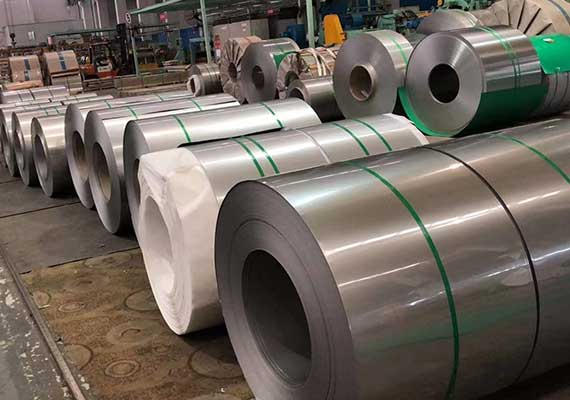
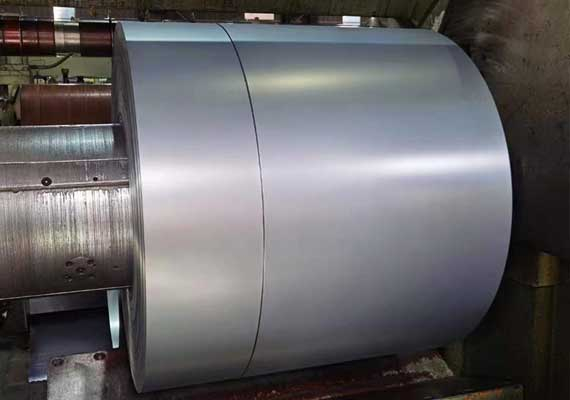
Stainless Steel Coil
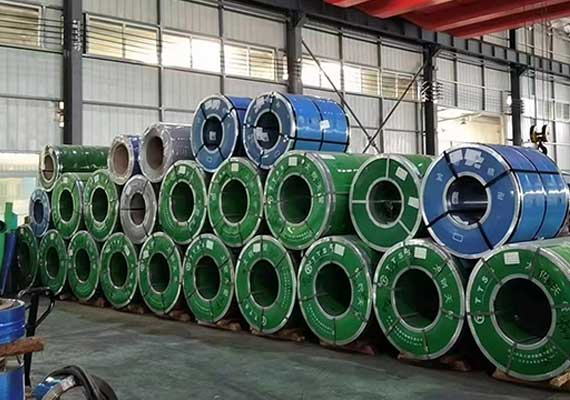
Stainless Steel Coil
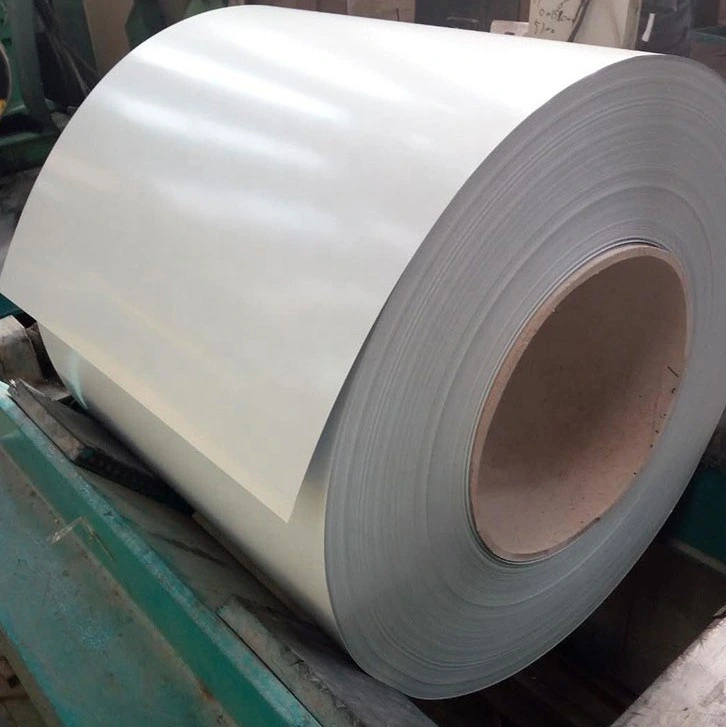
Stainless Steel Coil
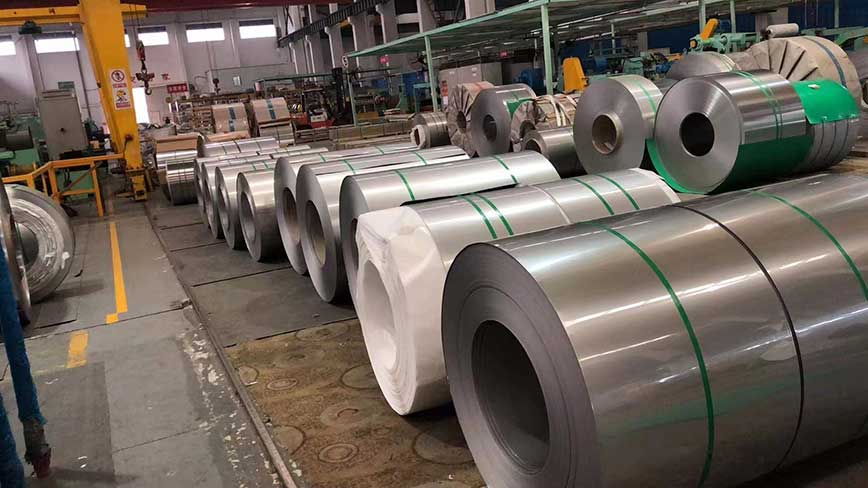
Surface Finish

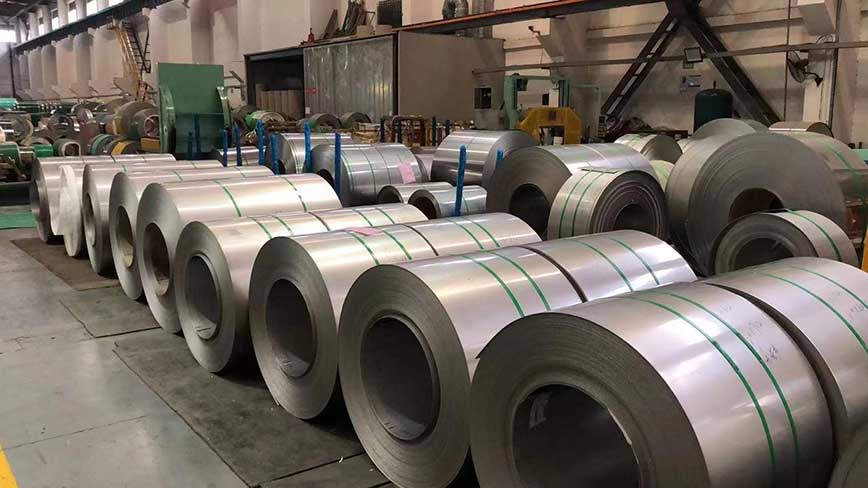
Product introduction
304 stainless steel coil is divided into austenitic stainless steel cold rolled coil and stainless steel hot rolled coil. 304 stainless steel (coil) plate characteristics: beautiful surface, the possibility of diversification; Good corrosion resistance; More durable than ordinary steel; Good corrosion resistance; High temperature oxidation resistance and high strength, so it can resist fire; Good plasticity, good welding performance. It has excellent corrosion resistance, good intergranular corrosion resistance and good processing performance.
Most of the stainless steel used as decorative tube plate is the 304 material of austenite body type, generally speaking, it is not magnetic or weak magnetic, but because of smelting caused by chemical composition fluctuation or processing state may also appear magnetic, but this cannot be considered counterfeit or unqualified.
The above mentioned austenite is non-magnetic or weak magnetic, and martensite or ferrite is magnetic, due to composition segregation or improper heat treatment when smelting, will cause a small amount of martensite or ferrite structure in 304 stainless steel austenite. In this way, 304 stainless steel will have a weak magnetic.
In addition, 304 stainless steel after cold processing, the organizational structure will also martensite transformation, the greater the deformation of cold processing, the more martensite transformation, the greater the magnetic steel. As a batch of steel belt, production φ 76 tubes, no obvious magnetic induction, production φ 9.5 tubes. Because of the large deformation of the ling bend, the magnetic sensation is obvious. The production square rectangular tube is larger than the round tube because of the deformation, especially the corner part, the deformation is more intense and the magnetism is more obvious.
In order to completely eliminate the magnetism of 304 steel caused by the above reasons, the stable austenite structure can be restored by high temperature solution treatment, so as to eliminate the magnetism.
In particular, due to the above reasons caused by 304 stainless steel magnetic, and other materials of stainless steel, such as 430, carbon steel magnetic completely is not the same level, that is to say, 304 steel magnetic always show is weak magnetic.
This tells us that if the stainless steel with weak magnetic or no magnetic, should be identified as 304 or 316 material; If it is the same as the magnetic carbon steel, it shows strong magnetism, because it is not 304 material.
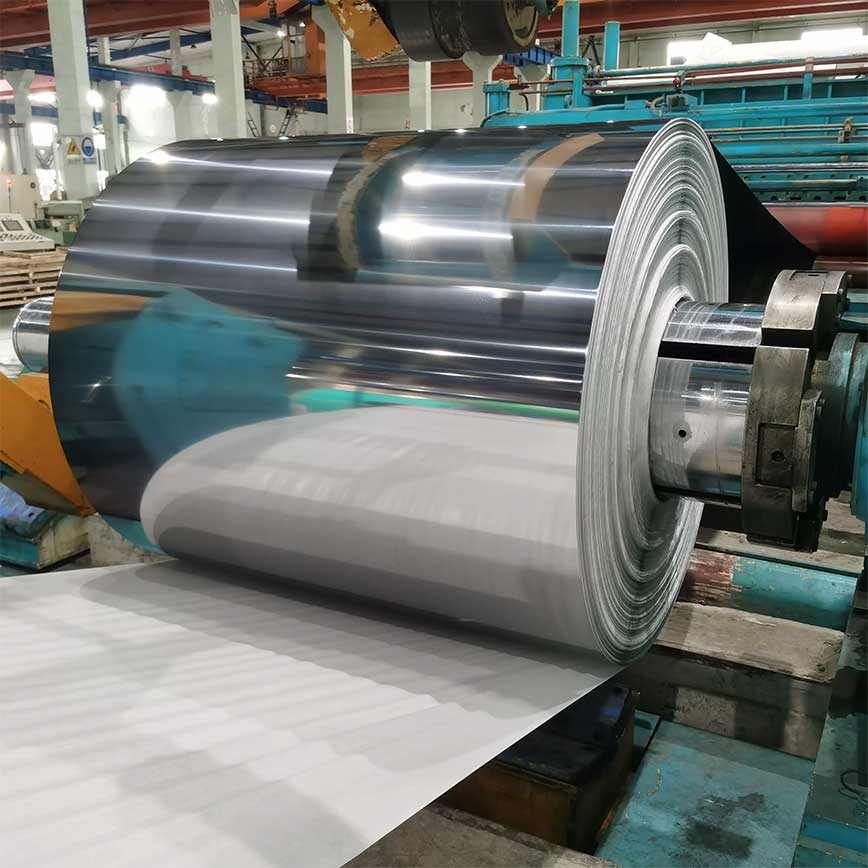

304 stainless steel is a common stainless steel material, the density of 7.93 g/cm³; It is also known in the industry as 18/8 stainless steel, which means it contains 18% or more chromium and 8% or more nickel; High temperature resistance of 800℃, with good processing performance, high toughness, widely used in industry and furniture decoration industry and food and medical industry. But it should be noted that food grade 304 stainless steel compared with ordinary 304 stainless steel, its content index is more strict. For example: basically the international definition of 304 stainless steel is mainly containing chromium 18%-20% nickel 8%-10%, but food grade 304 stainless steel is containing chromium 18% and nickel 8%, allow a certain range of fluctuations, and limit the content of various heavy metals. In other words, 304 stainless steel is not necessarily food grade 304 stainless steel
The common marking methods in the market include 06Cr19Ni10 and SUS304, in which 06Cr19Ni10 generally means national standard production, 304 generally means ASTM standard production, and SUS304 means daily standard production.
304 is a universal stainless steel, which is widely used in the manufacture of equipment and parts requiring good comprehensive properties (corrosion resistance and formability). To maintain the corrosion resistance inherent in stainless steel, the steel must contain at least 18% chromium and at least 8% nickel. 304 stainless steel is a brand of stainless steel produced in accordance with ASTM standards in the United States
1、ASTM A276(Standard Specification for Stainless Steel Bars棒材 and Shapes型材)
2、ASTM A240(Chromium and Chromium-Nickel Stainless Steel Plate板材,Sheet片材, and Strip带材 for Pressure essels and for General Applications)
3、JIS G4305(cold-rolled 冷轧stainless steel plate板材, sheet片材 and strip带材)
4、JIS G4303 (Stainless steel bars)
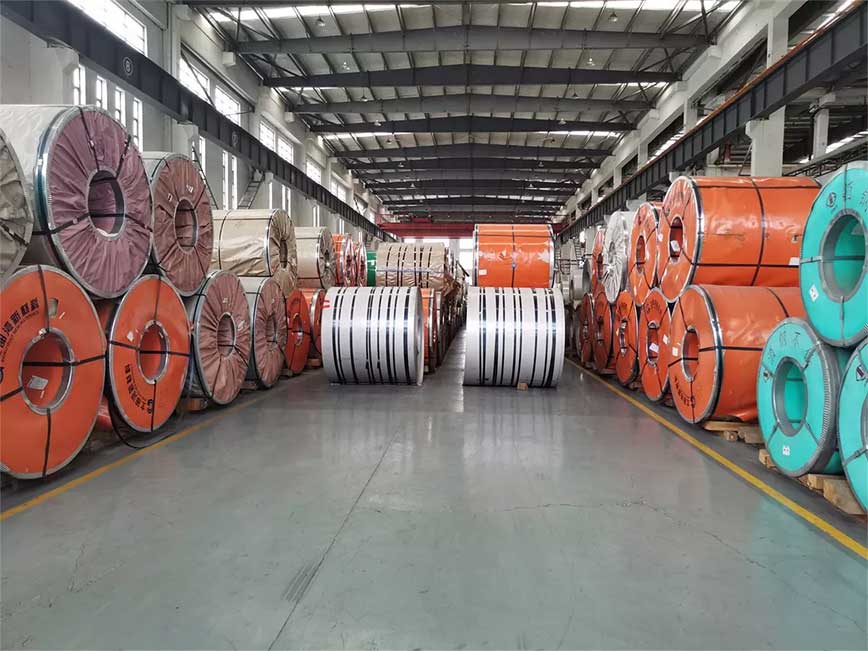
System description: 304 stainless steel is one of the most widely used chromium - nickel stainless steel, as a widely used steel, has good corrosion resistance, heat resistance, low temperature strength and mechanical properties; Stamping, bending and other thermal processing, no heat treatment hardening phenomenon (use temperature -196℃ ~ 800℃). Corrosion resistance in the atmosphere, if it is an industrial atmosphere or heavily polluted area, it needs to be cleaned in time to avoid corrosion. Suitable for food processing, storage and transportation. It has good machinability and weldability. Plate heat exchanger, corrugated pipe, household articles (1, 2 class tableware, cabinet, indoor pipeline, water heater, boiler, bathtub), auto parts (windshield wipers, mufflers, mold products), medical appliances, building materials, chemistry, food industry, agriculture, ship parts, etc. The content of the strict control of 304 stainless steel, can also be called food grade 304 stainless steel
Most use requirements are to preserve the original appearance of the building for a long time. When determining the type of stainless steel to choose, the main consideration is the required aesthetic standards, the location of the corrosive atmosphere and the cleaning system to be used. However, other applications increasingly seek only structural integrity or impermeability. For example, roofs and side walls of industrial buildings. In these applications, the owner's construction cost may be more important than aesthetics, and the surface may not be very clean. 304 stainless steel works well in dry indoor environment. However, in rural and urban areas to maintain their appearance outdoors, they need to be cleaned frequently. In heavily polluted industrial and coastal areas, the surface can be very dirty and even rust.
However, in order to achieve aesthetic effect in outdoor environment, it is necessary to use nickel stainless steel. Therefore, 304 stainless steel is widely used in curtain wall, side wall, roof and other building purposes, but in the serious erosion of industrial or Marine atmosphere, it is best to use 316 stainless steel. Stainless steel sliding door, people already realized the superiority that uses stainless steel in structural application adequately. Several design criteria include 304 and 316 stainless steel. Because "duplex" stainless steel 2205 combines excellent atmospheric corrosion resistance with high tensile strength and elastic limit strength, it is included in the European standard. In fact, stainless steel is manufactured in all standard metal shapes and sizes, and there are many special shapes as well. The most common products are made of sheet and strip steel, and special products are also made of medium thick plates, for example, hot-rolled structural sections and extruded structural sections. There are also round, oval, square, rectangular and hexagonal welded or seamless steel tubes and other forms of products, including sections, bars, wires and castings.
Q:Can you send samples?
A:Of course, we can send samples to all parts of the world, our samples are free, but customers need to bear the courier costs.
Q:What product information do I need to provide?
A:You need to provide the grade, width, thickness, coating and the number of tons you need to purchase.
Q:What are the shipping ports?
A:Under normal circumstances, we ship from Shanghai, Tianjin, Qingdao, Ningbo ports, you can choose other ports according to your needs.
Q:About product prices?
A:Prices vary from period to period due to cyclical changes in the price of raw materials.
Q:What are the certifications for your products?
A:We have ISO 9001, SGS, EWC and other certifications.
Q:How long does your delivery time take?
A:In general, our delivery time is within 30-45 days, and may be delayed if the demand is extremely large or special circumstances occur.
Q:Can I go to your factory to visit?
A:Of course, we welcome customers from all over the world to visit our factory. However, some of the plants are not open to the public.
Q:Does the product have quality inspection before loading?
A:Of course, all our products are strictly tested for quality before packaging, and unqualified products will be destroyed.
Q:How to pack the products?
A:The inner layer has a waterproof paper outer layer with iron packaging and is fixed with a fumigation wooden pallet. It can effectively protect products from corrosion during ocean transportation.
Q:What is your working time?
A:In general, our online service time is Beijing time: 8:00-22:00, after 22:00, we will reply to your inquiry during the next
working day.
Surface | Characteristic | Processing Technology | N0.1 | Original | Pickled after hot rolling | 2D | Blunt | Hot rolling + annealing shot peening pickling + cold rolling + annealing pickling | 2B | Blurred | Hot rolling + annealing shot peening pickling + cold rolling + annealing pickling + tempering rolling | N0.3 | Matte | Polishing and tempering rolling with 100-120 mesh abrasive materials | N0.4 | Matte | Polishing and tempering rolling with 150-180 mesh abrasive material | NO.240 | Matte | Polishing and tempering rolling with 240 mesh abrasive materials | NO.320 | Matte | Polishing and tempering rolling with 320 mesh abrasive materials | NO.400 | Matte | Polishing and tempering rolling with 400 mesh abrasive materials | HL | Brushed | Grind the surface of the steel belt with an appropriate grinding grain size to make it show a certain longitudinal texture | BA | Bright | The surface is annealed and shows high reflectivity | 6K | Mirror | Rough grinding and polishing | 8K | Mirror | Fine grinding and polishing | |||||||||||||||||||||||||||||||||||||||||||||||||||||||||||||||||||||||||||||||||||||||||||||||||||||||||||||||||||||||||||||||||||||||||||||||||||||||||||||||||||||||||||||||||
304 | C | Mn | P | S | Si | Cr | Ni | 要求,% | ≤0.08 | ≤2.00 | ≤0.045 | ≤0.030 | ≤1.00 | 18.0–20.0 | 8.0-11.0 | ||||||||||||||||||||||||||||||||||||||||||||||||||||||||||||||||||||||||||||||||||||||||||||||||||||||||||||||||||||||||||||||||||||||||||||||||||||||||||||||||||||||||||||||||||||||||||||||||||||||||
304 | C | Mn | P | S | Si | Cr | Ni | N | 要求,% | ≤0.07 | ≤2.00 | ≤0.045 | ≤0.030 | ≤0.75 | 17.5–19.5 | 8.0–10.5 | ≤0.10 | ||||||||||||||||||||||||||||||||||||||||||||||||||||||||||||||||||||||||||||||||||||||||||||||||||||||||||||||||||||||||||||||||||||||||||||||||||||||||||||||||||||||||||||||||||||||||||||||||||||||
SUS 304 | C | Mn | P | S | Si | Cr | Ni | 要求,% | ≤0.08 | ≤2.00 | ≤0.045 | ≤0.030 | ≤1.00 | 18.0–20.0 | 8.0-10.5 | ||||||||||||||||||||||||||||||||||||||||||||||||||||||||||||||||||||||||||||||||||||||||||||||||||||||||||||||||||||||||||||||||||||||||||||||||||||||||||||||||||||||||||||||||||||||||||||||||||||||||
SUS 304 | C | Mn | P | S | Si | Cr | Ni | 要求,% | ≤0.08 | ≤2.00 | ≤0.045 | ≤0.030 | ≤1.00 | 18.0–20.0 | 8.0-10.5 | .编号 | 标准/S30400 | C | Mn | P | S | Si | Cr | Ni | N | Cu | 1 | ASTM A276/A276M-15 | 0.08 | 2.00 | 0.045 | 0.030 | 1.00 | 18.0-20.0 | 8.0-11.0 |
|
| 2 | ASTM A959-11 | 0.07 | 2.00 | 0.045 | 0.030 | 1.00 | 17.5-19.5 | 8.0-11.0 |
|
| 3 | ASTM A240/A240M-15a | 0.07 | 2.00 | 0.045 | 0.030 | 0.75 | 17.5-19.5 | 8.0-10.5 |
|
| 4 | ASTM A182/A182M-15 | 0.08 | 2.00 | 0.045 | 0.030 | 1.00 | 18.0-20.0 | 8.0-11.0 | 0.10 |
| 5 | ASTM A193/A193M-15 | 0.08 | 2.00 | 0.045 | 0.030 | 1.00 | 18.0-20.0 | 8.0-11.0 |
|
| 6 | ASTM A269/A269M-15 | 0.08 | 2.00 | 0.045 | 0.030 | 1.00 | 18.0-20.0 | 8.0-11.0 |
|
| 7 | ASTM A312/A312M-15a | 0.08 | 2.00 | 0.045 | 0.030 | 1.00 | 18.0-20.0 | 8.0-11.0 |
|
| 8 | ASTM A320/A320M-15a | 0.08 | 2.00 | 0.045 | 0.030 | 1.00 | 18.0-20.0 | 8.0-11.0 |
|
| 9 | ASTM A403/A403M-15 | 0.08 | 2.00 | 0.045 | 0.030 | 1.00 | 18.0-20.0 | 8.0-11.0 |
|
| 10 | ASTM A493-09(2013) | 0.08 | 2.00 | 0.045 | 0.030 | 1.00 | 18.0-20.0 | 8.0-10.5 | 0.10 | 1.00 | 11 | ASTM A554-15a (MT-304) | 0.08 | 2.00 | 0.045 | 0.030 | 1.00 | 18.0-20.0 | 8.0-11.0 |
|
| 12 | JIS G4303:2012 | 0.08 | 2.00 | 0.045 | 0.030 | 1.00 | 18.0-20.0 | 8.0-10.5 |
|
| 13 | JIS G4304:2012 | 0.08 | 2.00 | 0.045 | 0.030 | 1.00 | 18.0-20.0 | 8.0-10.5 |
|
| 14 | JIS G4305:2012 | 0.08 | 2.00 | 0.045 | 0.030 | 1.00 | 18.0-20.0 | 8.0-10.5 |
|
| 15 | GB/T 20878-2007 | 0.08 | 2.00 | 0.045 | 0.030 | 1.00 | 18.0-20.0 | 8.0-11.0 |
|
| ||||||||||||||||||||||||
Products are widely used in construction, machinery, coal mining, chemical industry, electric power, railway vehicles, automobile industry, highways, bridges, containers, sports facilities, agricultural machinery, petroleum machinery, prospecting machinery, greenhouse construction and other manufacturing industries
The corrosion resistance of stainless steel coils decreases as the carbon content increases. Therefore, the carbon content of most stainless steels is low, up to 1.2%, and some steels have a low ωC (carbon content) of even less than 0.03% (such as 00Cr12). The main alloying element in stainless steel coil is Cr (chromium). Only when the Cr content reaches a certain value, the steel has corrosion resistance. Therefore, the goods Cr (chromium) content of at least 10.5%. Stainless steel coil also contains Ni, Ti, Mn, N, Nb, Mo, Si, Cu and other elements.
Most of the requirements for use are to maintain the original appearance of the building for a long time. In determining which type of goods to choose, the main considerations are the required aesthetic standards, the corrosiveness of the local atmosphere and the cleaning system to be used. However, other applications are increasingly seeking structural integrity or impermeability. Examples include roofs and sidewalls of industrial buildings. In these applications, construction cost to the owner may be more important than aesthetics, and the surface may not be very clean. The use of 304 stainless steel coils in dry interior environments is quite effective.
Weldability. Different product uses have different requirements for weldability. A class of tableware generally does not require weldability, even including some cookware companies. However, most products require raw materials with good weldability, such as second-class tableware, insulation cups, steel pipes, water heaters, water dispensers, etc.
Corrosion resistance. Most stainless steel coil products require good corrosion resistance, such as Class I or Class II tableware, kitchen utensils, water heaters, water dispensers, etc.
Polishing performance. In today’s society, stainless steel coil products in the production process are generally polished, only a few products such as water heaters, drinking fountains, etc. do not need to be polished. Therefore, this requires raw materials with good polishing performance.
1. The need for pre-treatment
Pretreatment is an important treatment step before the surface of
stainless steel coil parts enter surface treatment (including pickling,
chemical polishing and electrochemical polishing, electroplating,
passivation, black coating, coloring, chemical treatment, etc.). During
the forming process of goods parts, the surface may adhere to oil
stains, burrs, rough surfaces and oxides. Therefore, before surface
treatment, oil stains, burrs, uneven surfaces and oxides must be removed
in order to obtain subsequent satisfactory results through processing.
2. Treatment of removed dirt
Stainless steel coil surface pretreatment in the need to remove the dirt
can be divided into two categories: organic and inorganic substances.
(1) organic dirt. Including mineral oil (such as diesel, oil, paraffin,
gypsum, etc.) and animal oil, vegetable oil (such as soybean oil,
camellia oil, rapeseed oil, lard, butter, etc.). These oils are mainly
from the stainless steel coil zero cattle processing process used in the
lubricant. , cutting oil, quenching oil, polishing paste and polishing
paste, and fingerprints.
(2) Inorganic dirt. Including dirt, dust particles, oxides and other
contaminants generated during the heat treatment process.
3. Pretreatment steps for stainless steel coil parts
(1) The surface is mechanically leveled. Eliminate the roughness of the
stainless steel coil surface, through mechanical polishing and grinding
to achieve a surface finish.
(2) Degreasing. Remove the surface oil and dirt.
(3) Acid washing. Remove the oxides on the surface.
(4) Weak corrosion. Activates the surface to be treated, removes the
surface passivation film, and exposes the metal crystal structure.
Stainless steel is a high-alloy steel, with a large resistance to rolling deformation. In order to carry out high-efficiency and high-precision rolling, rigid rolling mills should be used, generally multi-roller cold rolling mill.
Special welding process is also a feature of cold-rolled stainless steel coil production.
In the production process of cold rolled stainless steel coil, the raw material (hot rolled coil) should be annealed, intermediate annealing should be carried out in the cold rolling process, and the final product should be annealed, so annealing is an important part of the production.
Cold-rolled stainless steel is a high-grade steel products, there are strict requirements for surface quality. Not only are metallurgical defects caused by the previous process not allowed, but also obvious defects caused by the cold rolling process.
Send your inquiry / assessment to Us. Anything need us ,please don’t hesitate contact us here! we will keep it secret for you !

Send your inquiry / assessment to Us. Anything need us ,please don’t hesitate contact us here! we will keep it secret for you !
